Features
- Without urgent action climate change will make it increasingly difficult to achieve a quality education – especially for disadvantaged girls and young women.
Dr Catherine Porter, Young Lives Director, highlights an often overlooked impact of climate change on education
Young Lives’ unique longitudinal research reveals in stark terms how childhood exposure to climate shocks such as droughts and floods has an unequal impact on children’s development, affecting their nutrition and access to education. This impedes their learning progress, with poorest children most affected.
The climate crisis intersects with another crisis: interrupted education and widening inequalities during the COVID-19 pandemic. Urgent action and new research is required to help build resilience, enable 12 years of quality education for girls and boys, and help to prepare them to face vulnerabilities that previous generations have never had to deal with.
Extreme weather events are becoming more frequent with the poorest households hardest hit.
Extreme weather events are expected to rise in frequency and intensity, even if COP26 is successful in charting a path for limiting global warming to 1.5C. And we know low-income countries and younger generations will be hardest hit.
Since 2001, the Young Lives study, has followed the lives of 12,000 children in poor communities across Ethiopia, India (Andhra Pradesh and Telangana), Peru and Vietnam. We have built a unique body of data with huge potential for understanding the long-term impact of climate change on vulnerable children and young people. Our research shows that extreme weather events experienced during childhood are having a significantly unequal impact on the poorest and most vulnerable groups.
By the age of 15, many children in our study had already experienced at least one extreme weather event, such as drought or flooding. In Ethiopia, it was more than half of our sample (54%), 44% in India, and around a third in Vietnam (34%) and Peru (30%).
Children living in the very poorest households have been significantly more affected [by extreme weather events]. In Ethiopia, a startling 81% of children in our poorest households experienced at least one extreme weather event, compared to only 22% in the least poor households
And children living in the very poorest households have been significantly more affected; in Ethiopia, a startling 81% of children in our poorest households had experienced at least one extreme weather event, compared to only 22% in the least poor households. Similar trends can be seen in India (65% v 18%), Peru (63% v 12%) and Vietnam (50% v 17%).
Climate related shocks affecting children in their early life have negative impacts on their growing bodies and minds
When extreme weather events destroy crops or lead to higher food prices, vulnerable families struggle to maintain nutritious diets. Young Lives’ evidence shows that poor diets and child malnutrition can have severe long-term consequences, affecting physical growth, cognitive skills, and progress in school. Across all four countries, the children most likely to be under-nourished are in the poorest households, in rural areas, and often among minority groups.
The first 1000 days of life – from conception to age 2 - are critical for children’s health, development and life chances. In Ethiopia, our results show that early childhood stunting due to malnutrition has a significantly negative impact on important cognitive skills, such as vocabulary and basic mathematics, especially for children whose parents received little or no education.
Climate-crisis induced malnutrition can also be transmitted from one generation to the next
These early stage shocks have significant long-term consequences. In India, Young Lives data matched with historical rainfall data shows that droughts, flooding or cyclones experienced by a mother while she is pregnant can affect the future development of her child’s vocabulary by age five. Longer term effects on basic maths and socio-emotional skills such as self-esteem, self-efficacy and agency, manifest even into adolescence.
In fact, analysis across all four study countries found that rainfall shocks and malnutrition experienced by adolescent girls even before they became pregnant can have a negative impact on future children’s height, again from infancy through to adolescence. Thus, climate-crisis induced malnutrition can also be transmitted from one generation to the next.
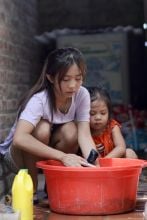
Poorer households are less resilient to financial hardships when climate shocks hit, which can increase the risk of interrupted education
Climate related shocks impact children and young people’s learning and education in different ways throughout their lives. In Vietnam, Young Lives evidence has shown reduced household income due to crop failures directly impact the amount of time children spend in school, particularly those from poorer households.
Families without access to affordable credit spend less on their children’s education during periods of crisis (for example, on school fees, learning materials or transportation) and are more likely to temporarily withdraw children from school, with less learning time available at home, leading to significant interruptions in education.
Without targeted action, the climate crisis is likely to further exacerbate inequalities, just as we have seen during the COVID-19 pandemic.
Girls and young women shoulder additional burdens of household work in times of crisis, amplifying their risk of dropping out of school
Food shortages and stresses on clean water supplies in times of drought and flooding also impact young people’s daily activities. Additional household work, such as walking further to collect drinking water and firewood, or extra childcare responsibilities when children are unable to go to school, often fall on girls and young women, further reducing their own time to study and increasing their risk of dropping out of school altogether.
Hunger can affect a child’s ability to concentrate in the classroom and also increases the likelihood of missing school.
We couldn’t get breakfast last year; we used to go to school without eating anything. We could not follow lessons properly due to hunger, and this contributed to the drop-out of my sister and myself
16 year old girl from Ethiopia, describing the impact of food shortages following drought in her village
The unequal impact of COVID-19 on education highlights a critical need to adapt for the climate crisis
Despite improvements in access to both primary and secondary education over the last two decades, significant inequalities in learning outcomes remain between and across all four of our study countries, with children from poor households and in rural areas consistently disadvantaged.
Without targeted action, the climate crisis is likely to further exacerbate inequalities, just as we have seen during the COVID-19 pandemic. Our recent COVID-19 phone survey shows that interrupted education and a growing digital divide have increased the risk of children and young people from poor and rural backgrounds falling further behind, or never returning to education.
While our results show significant impacts on both girls and boys, the combined pressures of interrupted education, and the trend for households to resort to more traditional gender roles in times of stress, has meant vulnerable girls and young women, have been particularly affected.
And those who have been most impacted by the pandemic are likely to be most vulnerable to the increasing effects of the climate crisis.
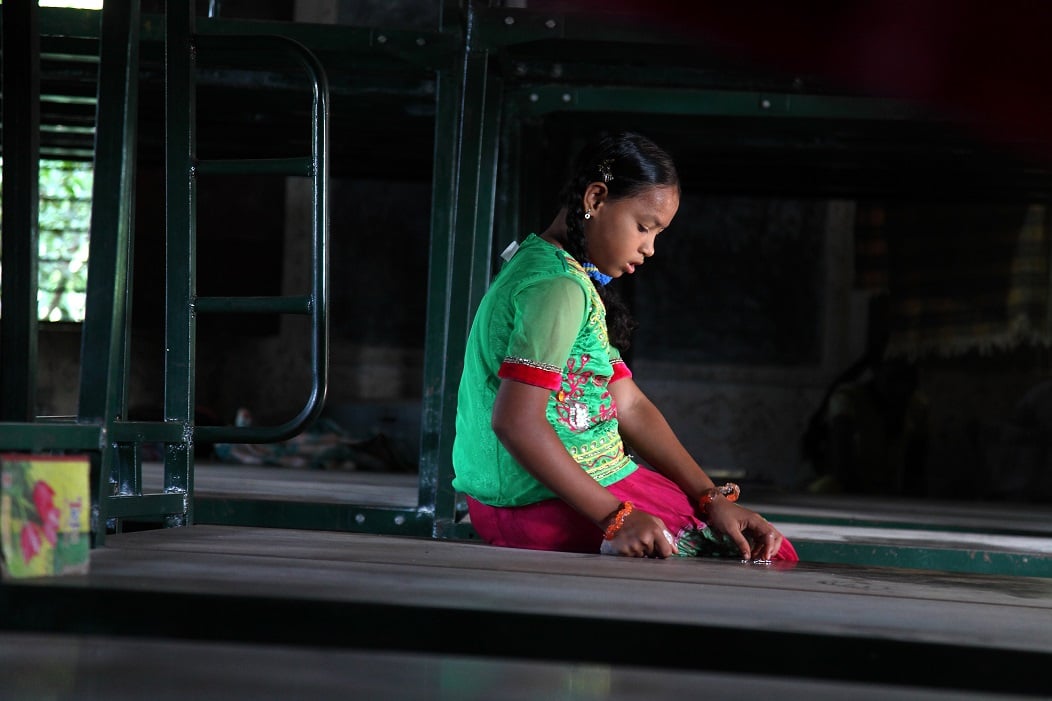
A call to action for more robust research and a broad approach to supporting vulnerable children achieve a quality education
Ensuring countries around the world honour commitments made during COP26 is critical if we are to prevent extreme global temperature rises, and enable the most disadvantaged communities to adapt to climate change in ways that safeguard children’s development and education – especially for girls and young women.
Enabling 12 years of quality education for all children (especially girls) in a changing climate requires a broad approach. Investing in teachers, schools and universities to improve the quality of education is pivotal. But really to make a difference, we also need to address the persistent inequalities that hold children back and make them more vulnerable to external shocks. Ensuring all children get the right start in life, including a sufficient and healthy diet is the foundation for future learning. Providing an enabling environment for all girls and boys to stay in school, with sufficient resources to study is also essential.
With increasing extreme weather events...we need much better understanding of how vulnerable communities actually experience and respond to climate related shocks
With increasing extreme weather events continuing to impact the poorest families most, we need much better understanding of how vulnerable communities actually experience and respond to climate related shocks throughout their lives.
We need to build evidence on:
- how climate related shocks, nutrition and learning interconnect – enabling more holistic programmes of support, including ‘shock-responsive’ social protection programmes to reach disadvantaged households in disaster prone regions, particularly for vulnerable infants and adolescent girls, aligned with early learning and school feeding programmes.
- how and why persistent inequalities continue to underpin the learning crisis in education – further longitudinal research is critical to understand both trends over time and the impacts of specific shocks, including climate related shocks; targeted investment in early years education and addressing the growing digital divide is critical to support poor and marginalised households, particularly in rural areas.
- the additional barriers to girls’ education in a changing climate – strengthening age and gender disaggregated data and evidence on the impact of climate change, and enabling specific action to help keep girls in school in times of stress, including practical measures to relieve burdens of household work and childcare responsibilities.
Dr Porter will be discussing these issues further as part of the COP26 Gender Day Event, Our Future, Our Voice – Girls’ Education and Tackling the Climate Crisis, hosted by the UK’s Foreign, Commonwealth & Development Office (FCDO) on 9 November 2021; to join the event live - see here.
Or here Our Future, Our Voice: Girls' Education and Tackling the Climate Crisis - YouTube
Mosquitoes are notoriously dangerous, responsible for over one billion cases of disease and around a million deaths each year. Tackling diseases such as malaria, yellow fever and dengue requires targeted control of their vector, the mosquito. This in turn relies upon detailed knowledge of the distribution, diversity and abundance of mosquitos in space and time.
The HumBug project has developed methods to detect and identify different species of mosquitoes using the acoustic signature (sound) of their flight tones, captured on an inexpensive smartphone.
The project recently openly released five years’ worth of research data of acoustic mosquito flight tones from 36 different species, representing over 20 hours of audio recordings that the team have expertly labelled and tagged precisely in time.
Co-Principal Investigator Professor Stephen Roberts says of the data release, 'Making our extensive dataset openly available will prove hugely beneficial to entomologists and mosquito domain experts. The scale of the data and associated algorithms is unique. We hope it will enable a better understanding of mosquito behaviour, distribution and help manage the threat they pose to humans.'
By using sound to identify different species, the Humbug system generates unprecedented levels of urgently needed high-quality, spatially accurate mosquito occurrence data without incurring any risk to those conducting the surveys. The recordings, along with their time and location, are uploaded by the app to a central server where mosquito sounds are detected and the species is identified using a suite of algorithms that distinguish species according to their acoustic signature.
The paper presents the first large-scale multi-species dataset of acoustic recordings of mosquitoes tracked continuously in free flight, at data collection sites include Kenya, Thailand and Tanzania, the UK, and the USA. It will be presented at the 35th Conference on Neural Information Processing Systems 2021 with an oral presentation in December 2021.
The HumBug Project is supported by a grant awarded through the 2014 UK Google Impact Challenge, the ORCHID project and the Bill & Melinda Gates Foundation. The project team includes researchers from the University of Oxford, Ifakara Health Institute in Tanzanis and the Kinshasa School of Public Health in the DRC.
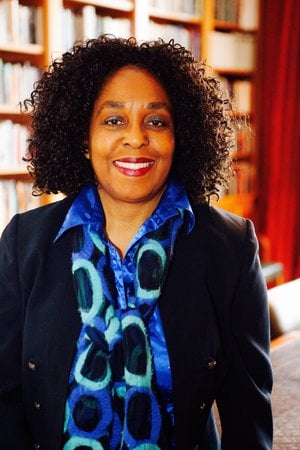
Professor Brenda E Stevenson is an award-winning historian of race, slavery, gender, family, and conflict. She is also a mother and wife, and a Black woman who has dedicated her life to giving voice to the voiceless, by telling the stories of the enslaved and the oppressed.
As she begins her tenure as Oxford University’s first Hillary Rodham Clinton Chair of Women’s History, she discusses her Inaugural lecture.
It is important to understand the unique positions that women have had in various cultures and societies and their experiences continue to be such a fascinating area of study. There is still so much more progression that needs to take place, and so many ways that we are not counted as equals at the table – and sometimes we are not counted at the table at all.
‘In society, we move forward, but we also take a few steps back from time to time, and that is a painful dance’
It was through Susie Byrd’s contribution to an archive on enslaved peoples - particularly enslaved women - that I have been able to do much of my work. This is a woman that we don’t really know much about, but she was an incredible force. She was one of the first people to listen to enslaved women and men, and tell their stories, of what being enslaved meant for them.
Through her work and that of others, we were able to turn a corner in how we looked at enslaved Black people as human beings, who have culture, ideas, family, and pain. People who suffer and love, and experience desire. It is not a matter of portraying people as perfect, but seeing them in their complex entirety, with the same kinds of strengths, weaknesses and abilities to soar and be defeated, as you and me.
Slavery is part of the human experience, or as some people would say, ‘the human stain’, and we really must understand that and what it is to be an enslaved person, to eradicate it.
It’s not just something that took place in the US – or even the Caribbean, and it’s not just Black and white. It is an institution that has taken place since the beginning of what we call civilisation - the Greeks, Romans, Egyptians, Africa, Asia and the Americas, prior to European contact - and really every single society in the world. And it still exists today.
‘It is not a matter of portraying people as perfect, but seeing them in their complex entirety, with the same kinds of strengths, weaknesses and abilities to soar and be defeated, as you and me.’
These cyclical difficulties and horrific inequalities that we live with, see, protest, are frightened by, and in turn, disgusted by, have been systematised over time, in a way that we can’t seem to break out of. I want my students to put themselves into the shoes of these girls and women – or not – because slaves were barefoot – and imagine, what was it like to be them?
There are some unique challenges in teaching history of the enslaved. I think that slavery has been racialized and it can turn people off – particularly young people, because they either identify with that group, or they don’t. They get tired of their group constantly being the subject of negative attention and trauma, and the others feel they are made to feel guilty for things they played no part in.
How people are marginalised across time captures peoples’ imagination when you make it relevant to them. You learn how people survive and overcome that – or they don’t. That is why I like to talk about how slavery has occurred across all societies, and still does.
Race matters, class matters and gender matters, and the ways in which any of us are treated in society, unfortunately, have a lot to do with those kinds of identities.
The truth is that marginalised people (racially, economically, politically, culturally) are much more likely to be victimised in societies where those hierarchies have been established that say that they are not as important as other people. We have seen that happen in the US, UK and almost every place.
We also have to use what we get. We have to speak that truth but use the opportunities that we get to make positive change. In society, we do move forward, but we also sometimes take a few steps back, and that is a painful dance.
Being a Black female administrator in an academic space does come with its own unique challenges. A University is no different to any other place. The same biases and expectations exist as they do in any other industry, and people really see you in the same ways, positively and or negatively, that they see you anywhere and everywhere else.
As my good friend and scholar, Deborah White says, black female scholars often are regarded at universities as ‘matter out of place’.
‘Race matters, class matters and gender matters, and the ways in which any of us are treated in society, unfortunately, have a lot to do with those kinds of identities.’
As a female of colour in an institution not founded by people of colour, regardless of gender, people don’t expect to see you, for you to have a voice, or to be able to contribute or challenge anything. They don’t expect for you to be at the table - or even in the room.
It is so easy to dismiss anyone who looks like me, whether my gender, race, class, generation or at the intersection of these traits, and to dismiss my presence as a tokenistic response to affirmative action, or inclusion, or a quota requirement. Anything that allows them to exclude you on that basis. But guess what? I don’t care anymore!
From the time that I was in college some have viewed me as without merit. Those opinions no longer matter to me. I know that I have much to offer. For whatever reasons that I am where I am, I am thankful.
As institutions work to be more inclusive, the little that they can do - at least initially - can appear tokenistic. But the key is to keep trying, that one hire or story, is one more person and idea than there was yesterday. There is a desire to push us into where we should have been a long time ago, but everything is a negotiation.
Nikolaos Farmakidis invents the ‘Nanocalligraphy’ tip.
written by Méadhbh O’Connor, artist in residence.
Pressing a pen to paper, my hand travels like contours over a yet unformed topography. Spheres, globules, waves, lines and arrows emerge; rotating, floating, interacting. ‘...flipping the magnetic spins of atoms in a 2D monolayer,’ a physicist friend had been gabbling down the phone to me. Or something. His voice, converted to signals and bounced from relay to relay over a continent to me in a flash, reconfigures and amplifies out of the device into my ear.
‘...monopoles produced immediately after the big bang,’ another friend casually says in a phone call about something else.
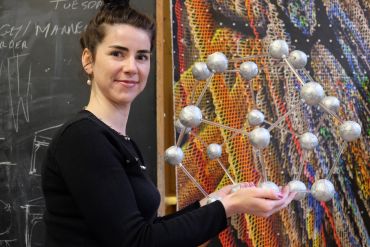 Méadhbh O’Connor.
Méadhbh O’Connor. My mind drifts as the words hit my ear, meandering around spaces constructed in my head. Spinning balls, immense spaces, tiny spaces, blackness, light, no space...
‘Less like points and more like a field,’ I recall someone saying. I hold the page up in front of me with the drawing.
The marks project something back, something I don’t know consciously and can’t pin down to any singular meaning. I don’t know what it is, I don’t know what to call it and I don’t know where it came from. And yet the thoughts flowed down my arm and onto a page, like opening a valve into the mind.
To make a mark is creativity in its earliest form. From the child who, as if by instinct, reaches for the crayon to daub their first impressions, to the back of the envelope calculation that leads to a new discovery. In new technologies, the printing of a circuit board - yet another kind of mark making - has opened up the possibility for almost limitless information to be created, computed and stored on the countless gadgets that populate our world today. The mind boggles.
I find myself as an artist working, somehow, with a lively group of engineers at Oxford with the Advanced Nanoscale Engineering group, led by Harish Bhaskaran
Today, I find myself as an artist working, somehow, with a lively group of engineers at Oxford with the Advanced Nanoscale Engineering group, led by Harish Bhaskaran.
Wires, computers, various gadgets, gas canisters, something called an atomic force microscope, containers with tiny chips, stacks of silicon wafers, labels, tools... an abundance of odd objects are scattered around the lab. I see all this stuff and think sculpturally, ‘What could I make with this colourful wire?’
What I see is only the housing. The magic of what the group does is beyond the perception of the naked eye. One nanometer, or 100,000 times smaller than the width of a human hair, is one of the scales they use.
‘We are finding ways to capture the energy of light within nanoscale wires, while still figuring out how to make all of these sustainably and in new exotic formats,’ Professor Bhaskaran tells me.
We are finding ways to capture the energy of light within nanoscale wires, while still figuring out how to make all of these sustainably and in new exotic formats
Professor Bhaskaran
The group is busy creating a new world at this invisible scale. Lab meetings are held every other week. But we converge, instead, inside the very kind of machine their research helps to create: the computer. Transformed into pixels and in our boxes on the Zoom screen, the same questions seem to arise again and again.
‘How can we do this?’
‘What could that mean?’
‘Is there another way?’
‘Why not try this?’
Ideas dash back and forth at speed. One afternoon, I find myself in the lab talking to one or two members of the group. As expected, possibilities and ideas are being discussed with vigour. In all the enthusiastic gesticulations something flies across the room.
‘What was that?’ ‘Nothing...’
I notice the little round case that rolled across the floor with a now cracked, but thankfully unused, silicon wafer on top.
Nikolaos Farmakidis is neatly handwritten across the label. Unaware of the chaos that had just momentarily erupted in the lab, Nik is in his office concentrating fixedly at his computer, as he does every day with unyielding focus.
‘My main interests are trying to bridge optical and electrical methods for computer processing,’ he says, with a humility that belies his futuristic research.
My main interests are trying to bridge optical and electrical methods for computer processing, says Nikolaos Farmakidis. It is a bit different from my usual research. A side project...I designed a new tip for lithography at the nanoscale
He tells me of a paper he’s been working on. One of many, I note.
‘It is a bit different from my usual research. A side project,’ he modestly says.
Something unexpected, I interpret his remark.
‘I designed a new tip for lithography at the nanoscale.’
He shows me an image of an elegant circle, wide at the top and gradually narrowing at its side, and repeating again to close the infinite loop. I learn that I am seeing 100 microns, again, far smaller than the width of a single human hair. My eye darts to the right and another image is on the page, ‘My Life’ scribed beautifully in Arabic.
How better to demonstrate its potential than to consult a calligrapher, Majid Alyousef, a master of the mark. The elegant letters form an ambigram, turned upside down it cleverly reads the same. Much like Nik’s perfect circle. Nano-calligraphy he calls this novel method. Or to be more precise: Nano-Calligraphy Scanning Probe Lithography (nc-SPL). Mechanical nanolithography which can be extended to the patterning of biological materials such as proteins or DNA or even sheets, one atom thick.
A new probe to score the minutest of marks with the atomic-scale movements of the microscope it sits in. Some hobbyists even make their own such machines. It’s an inexpensive new tool for them too.
Nik and his collaborators have fashioned a new tool not just for the researcher experimenting at the frontiers of computing, but also the hobbyist, the artist and the curious to make a new mark on the world
As we stop chatting I turn back to my laptop to continue making pictures, with pixels this time, and realise how much I had taken it for granted. Every chip, screen, logic gate, the circuitry, programming language, the billions of parts, had to be thought up and made by somebody or somebodies. A humming, pulsating, electrical monument to the creativity of countless people. I stare at the device, somehow seeing it anew, and am suddenly jolted out of this distant thought. A ping leaps out of the phone, then the laptop, then the computer: a reminder with ‘Bi-weekly lab meeting’ appears on every screen.
I log in to listen in again. Never resting, the group has moved on to the next burning questions. In the meantime, Nik and his collaborators have fashioned a new tool not just for the researcher experimenting at the frontiers of computing, but also the hobbyist, the artist and the curious to make a new mark on the world.
Méadhbh O’Connor is a visual artist from Ireland who has dedicated her art practice to bringing art and science together. She is artist in residence with the Advanced Nanoscale Engineering group in the Department of Materials, University of Oxford
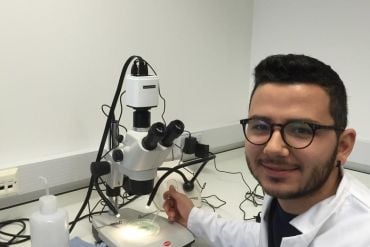 Dr Paris Stefanoudis, University of Oxford
Dr Paris Stefanoudis, University of OxfordNew research from the University of Oxford, in collaboration with 15 other institutions and NGOs around the globe, outlines the opportunities and challenges associated with organising virtual meetings.
The global pandemic of COVID-19 and associated human-movement restrictions has resulted in mass postponements or cancellations of in-person meetings. An essential part of any academic career, conferences offer a unique opportunity for scientists to interact, network and form partnerships.
'We felt that outlining our lessons learned from organising an online meeting and providing information on actual costs and platforms would be useful to future meeting organisers planning similar events, since online meetings are here to stay.' Dr Paris Stefanoudis, University of Oxford, Zoology Department.
Their absence is likely to impact early-career researchers the most because they have time-sensitive academic paths that rely on conferences to disseminate their work, connect with established researchers and ultimately advance their academic careers.
In this work, published in the Proceedings of the Royal Society B: Biological Sciences, a team of 14 authors describe their experience of organising a medium-sized (<400 participants) international meeting held online in August 2020, and outline the logistics involved in administering such an event. In addition, they present the participants’ perspective, drawn from a post-meeting questionnaire and finally, compare demographic data from this meeting with past, in-person meetings of similar-themed symposia.
'We felt that outlining our lessons learned from organising an online meeting and providing information on actual costs and platforms would be useful to future meeting organisers planning similar events, since online meetings are here to stay. We certainly wish we had that information available when we started organising our meeting.' Dr Paris Stefanoudis, University of Oxford, Zoology Department.
A post-conference questionnaire indicated that participants regarded live talks as a key component of online meetings and were preferred over pre-recorded talks, although most supported the option of having the latter to cater for those with broadband issues or time zone conflicts. Respondents felt that the virtual meeting did not fully replicate the in-person experience, as for example, they were not able to engage with other researchers as much as with past in-person meetings, and received less feedback for their presented work.
‘While we have shown that it is certainly possible to minimise organising costs for online meetings, it is not sustainable in the long run to expect online meetings to be run on a volunteer-basis.’ Dr Paris Stefanoudis, University of Oxford, Zoology Department
In addition, most could not allocate as much time as for in-person meetings and almost half said they were less concentrated. Although not specifically identified in the study, the authors suggest that that personal commitments, time zone differences, online fatigue, and lack of care for dependents - all of which have been augmented during the COVID-19 pandemic – may have played a role in that. Despite those caveats, the vast majority of respondents enjoyed the online meeting and indicated that they would join similar events again.
From a financial perspective, cost for participants as well as for organisers was a fraction of that of in-person meetings. The meeting organisers reduced costs by not hiring a commercial conference company, and instead using ‘off-the-shelf’ software products, largely volunteering their time, and only spending some funds to pay for three researchers to take on coordinating and technical support duties.
‘While we have shown that it is certainly possible to minimise organising costs for online meetings, it is not sustainable in the long run to expect online meetings to be run on a volunteer-basis. It is also not equitable as well, since inevitably this will lead to future online conferences being organised predominantly by researchers in the Global North that have the financial luxury to volunteer their time for free.’
'Going forward a tiered registration or registration waivers should be used to offset costs for those in financial need’ Dr Paris Stefanoudis, University of Oxford, Zoology Department
‘Going forward, online meetings of this size would require hiring more paid organising and technical support staff or a professional company, which would somewhat increase online participating costs. In any case, a tiered registration or registration waivers should be used to offset costs for those in financial need’ Dr Paris Stefanoudis, University of Oxford, Zoology Department
Moreover, the online meetings’ demographic composition compared favourably to that of a similar-themed, past in-person meeting held in a high-income nation in 2018, with the former doubling the number of participants from low and middle-income nations. Interestingly, demographic data were comparable to an in-person meeting held in an upper-middle-income nation, indicating that holding in-person meetings in developing economies can be as effective in widening participation as virtual meetings.
- ‹ previous
- 13 of 248
- next ›
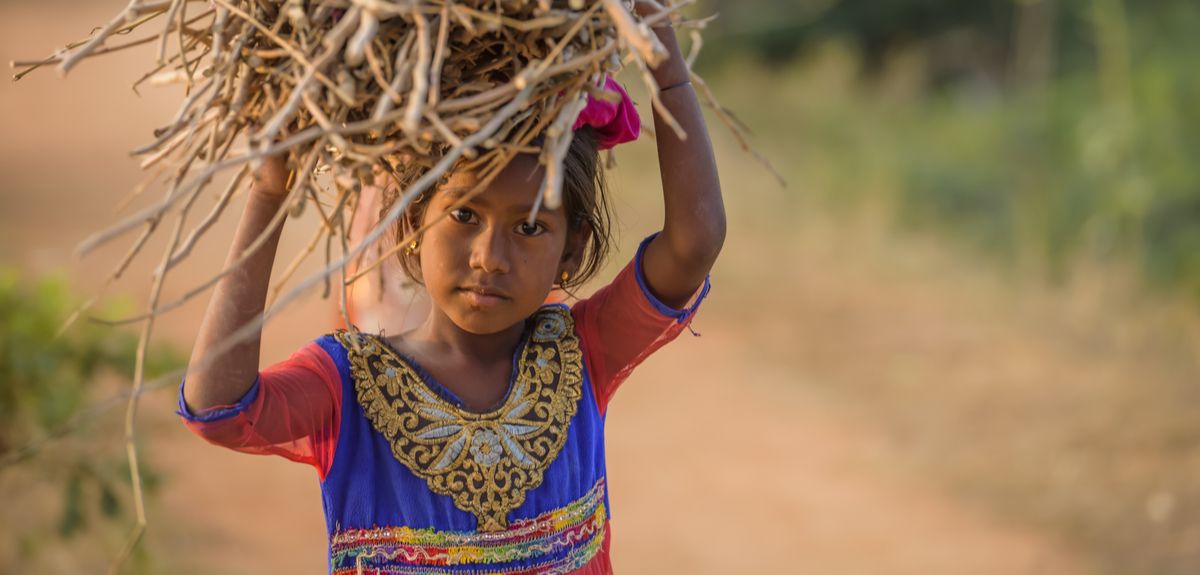
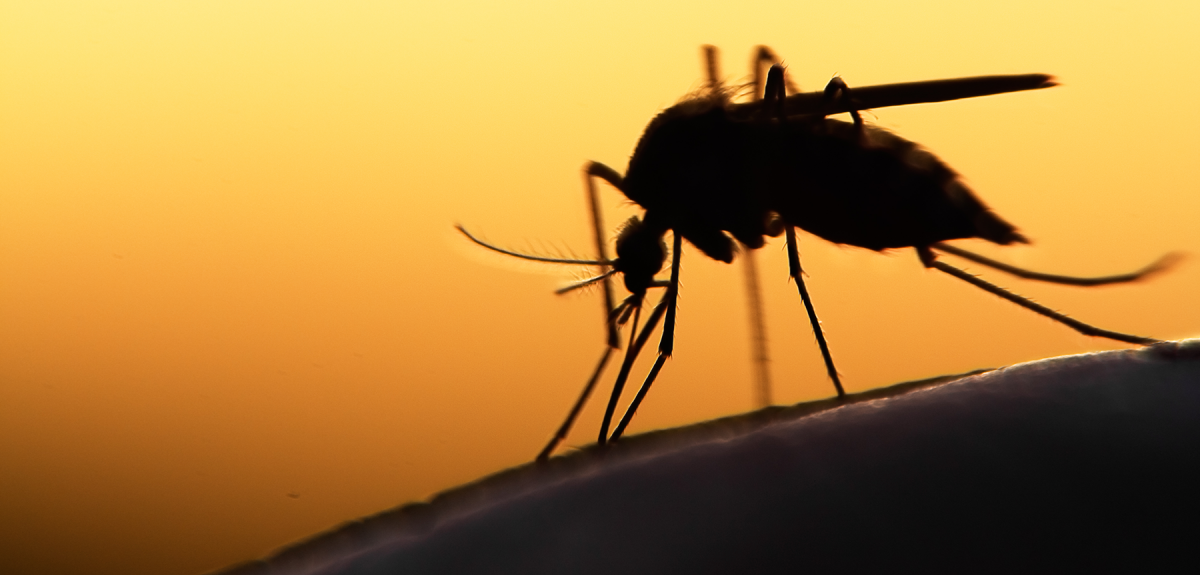
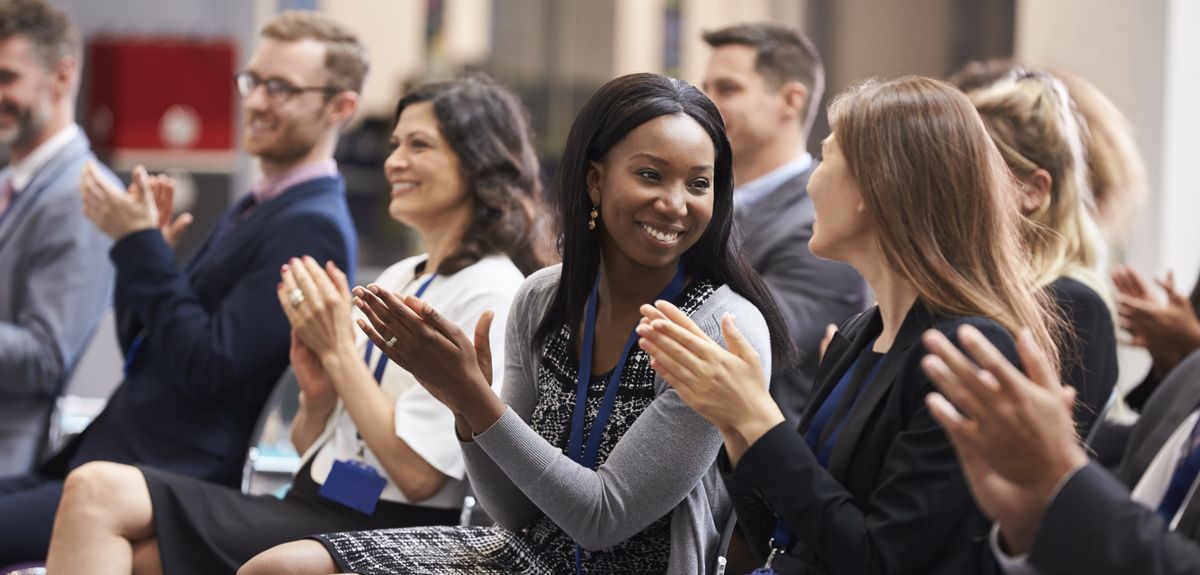


 Teaching the World’s Future Leaders
Teaching the World’s Future Leaders  A blueprint for sustainability: Building new circular battery economies to power the future
A blueprint for sustainability: Building new circular battery economies to power the future Oxford citizen science project helps improve detection of antibiotic resistance
Oxford citizen science project helps improve detection of antibiotic resistance The Oxford students at the forefront of the fight against microbial resistance
The Oxford students at the forefront of the fight against microbial resistance  The hidden cost of AI: In conversation with Professor Mark Graham
The hidden cost of AI: In conversation with Professor Mark Graham  Astrophoria Foundation Year: Dr Jo Begbie reflects on the programme’s first year
Astrophoria Foundation Year: Dr Jo Begbie reflects on the programme’s first year World Malaria Day 2024: an interview with Professor Philippe Guerin
World Malaria Day 2024: an interview with Professor Philippe Guerin From health policies to clinical practice, research on mental and brain health influences many areas of public life
From health policies to clinical practice, research on mental and brain health influences many areas of public life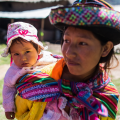 From research to action: How the Young Lives project is helping to protect girls from child marriage
From research to action: How the Young Lives project is helping to protect girls from child marriage